Table of Contents
![]()
Are you having trouble selecting where to spend your vacation? Would you like to visit a place that isn’t overrun with tourists but has breathtaking natural beauty? Do you wish to travel to a place where obtaining a passport and getting vaccinated is not required? You can spot a few of these locations if you gaze up at the night sky. All you’ll need for the journey, which could take months or even years, is a swift rocket and enough food, water, and oxygen.
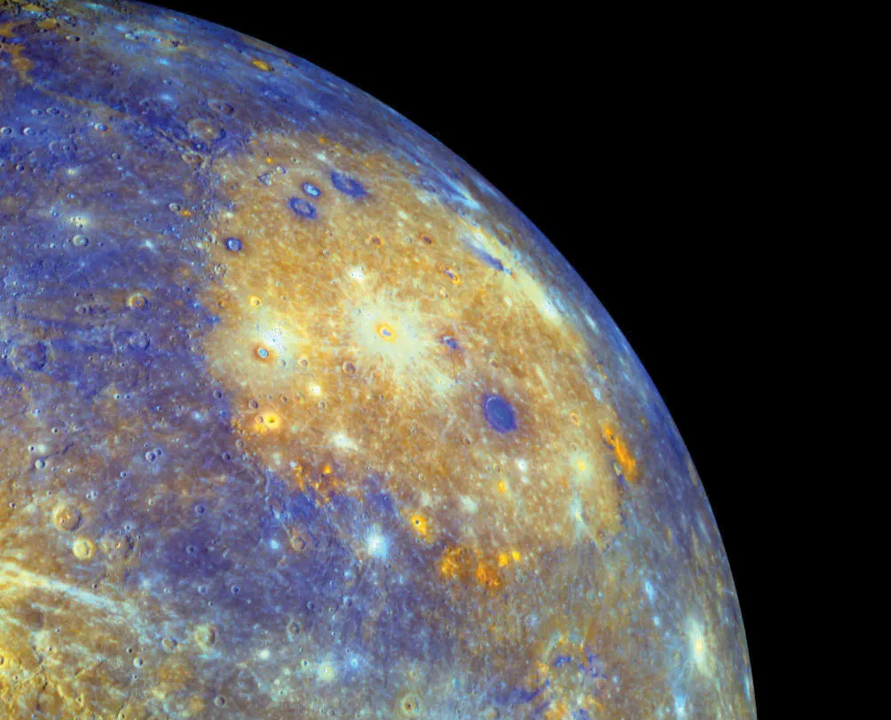
Caloris Basin, Mercury
The inner solar system was being cleared of the last bits of debris left over from its formation about 4 billion years ago. Known as the Late Heavy Bombardment, this period saw the formation of the Caloris Basin, one of the largest features in the solar system with a diameter of 1,550 km (960 miles), when a large asteroid similar to those that created the “seas” on the Moon crashed into the planet Mercury. From the center outward, the interior of the basin is dotted with deep fractures and high ridges. The highest mountains in Mercury, rising three kilometers (2 miles) above the plains, encircle the basin, as do numerous lava vents that suggest an active volcanic phase.
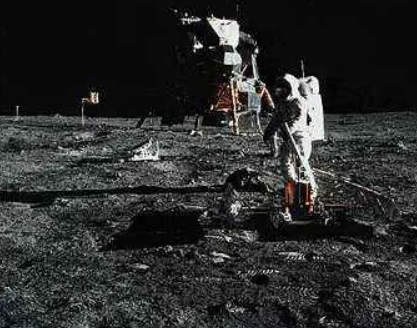
Site of Apollo 11 landing, Moon’s Sea of Tranquility
There are more than just bleak craters and breathtaking views in the solar system; humankind has left its mark on both the planets and interplanetary space. The Apollo 11 landing site at the Moon’s Sea of Tranquility, where Neil Armstrong and Buzz Aldrin became the first humans to set foot on another planet on July 20, 1969, is my top choice for a historical site to visit. The lower portion of the Eagle lunar module can be seen there. But watch where you walk. Both your imprint and Armstrong and Aldrin’s will endure for millions of years.
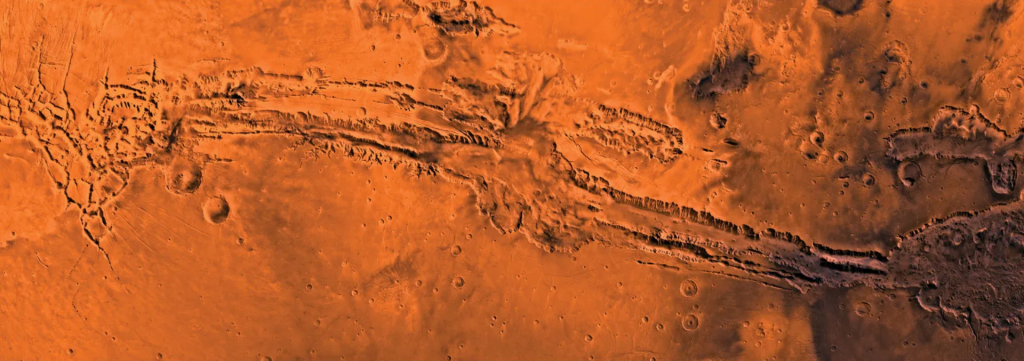
Valles Marineris, Mars
The Grand Canyon in Arizona is truly amazing. It is roughly 2 km (1 mile) deep and 450 km (280 miles) long. But it’s just a ditch when compared to the Valles Marineris canyon system on Mars. Valles Marineris is named after Mariner 9, which made the discovery of it in 1971. It is located 4,000 kilometers (2,500 miles) across the planet. Typical canyons have walls that are 2-3 miles (1–5 km) deep and 200 km (125 miles) across. A depression 600 km (375 miles) across and 9 km (5.6 miles) deep sits at the heart of the canyon system. Valles Marineris may be a fault system dividing two continental plates, according to conjecture. If this is the case, plate tectonics has shaped the surfaces of only Earth and Mars.

Olympus Mons, Mars
The largest volcano in the solar system is called Olympus Mons. It rises 22 km (14 miles) above the surrounding Tharsis plain and spans 700 km (435 miles). Olympus Mons’ cliff edge is 10 kilometers (6 miles) high. Thereafter, there is a short incline leading to the central craters, which span 85 kilometers (53 miles). Mauna Loa in Hawaii is the largest volcano of this type on Earth, measuring 120 km (75 miles) in diameter and 9 km (6 miles) in height, with most of its surface hidden beneath the ocean.

Great Red Spot
The Great Red Spot, a whirling red oval storm twice the size of Earth, is Jupiter’s largest surface feature. Since 1878, it has been regularly monitored, and there are no indications that it will stop. Every seven days, the entire system revolves, with wind speeds approaching 400 km/h (250 mi/h). Its extent into Jupiter’s interior is unknown, but it floats above the planet’s main cloud layers. At higher altitudes, the spot itself can occasionally turn from orange-red to gray due to the presence of white clouds covering it. Though theories have ranged from sulfur and phosphorous compounds to organic material like carbon compounds created by lightning or chemical reactions with sunlight, it is still unknown what causes the redness in the spot.
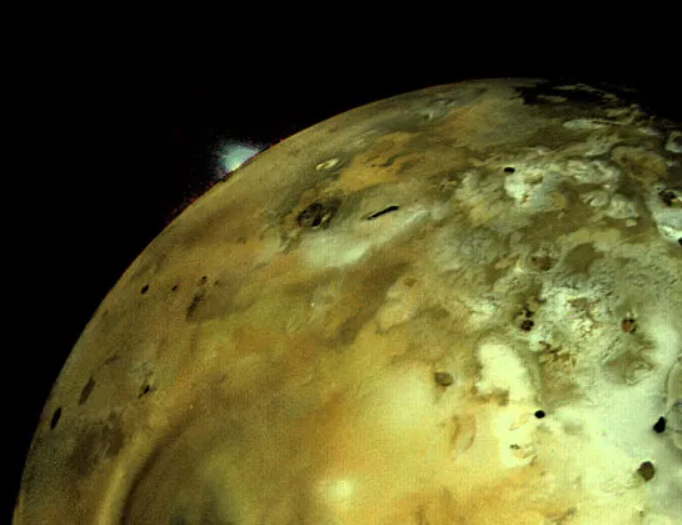
Io
Due to Galileo’s discovery of Jupiter’s four large moons in 1610, they are known as the Galilean satellites. Since Io is the moon closest to Jupiter, the interior of the moon gets heated by tidal effects, which squeeze it like a rubber ball. Silicate lava explodes in spectacular ways as a result of this energy. When the US spacecraft Voyager 1 discovered Io’s volcanoes in 1979, the moon became the first location beyond Earth where active volcanoes were seen. Because of the sheer volume of these eruptions, Io completely resurfaces every few millennia. Due to sulfur and sulfur compounds, the surface is mottled in orange, white, and yellow colors.
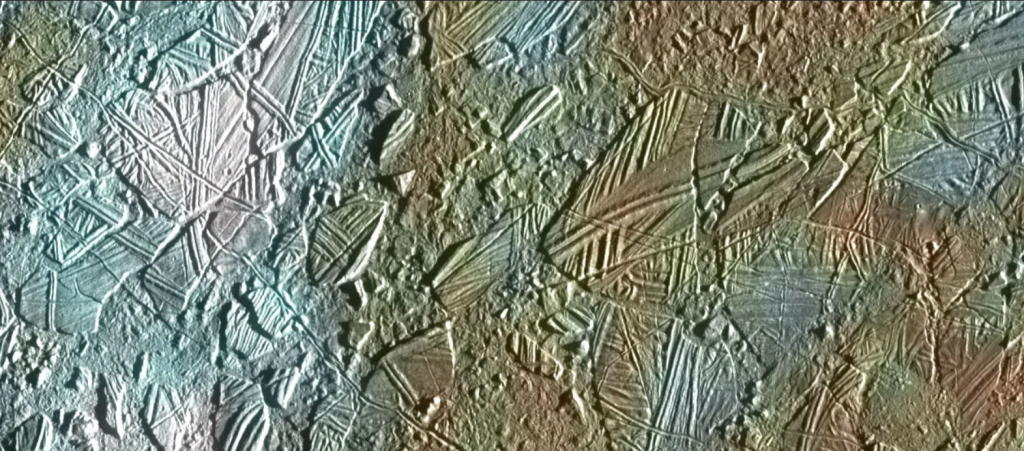
Europa
One of the Galilean satellites, Europa, is encased in ice. Its smooth surface and sparse impact craters suggest that it is very young. Indeed, Europa may be so young that resurfacing is taking place right now. The question of what lies beneath the surface of ice is an intriguing one. Although the ice is most likely 150 km (95 miles) thick, there might be an ocean of liquid water beneath it. If such an ocean exists, scientists have hypothesized that life might be present there due to heat energy from Europa’s tidal flexure—which would be less severe than Io’s, but still noticeable. It might be feasible for a submarine probe to melt its way through the ice and navigate the hidden waters of the subsurface ocean if the surface cracks observed on Europa are actually much thinner portions of the crust.
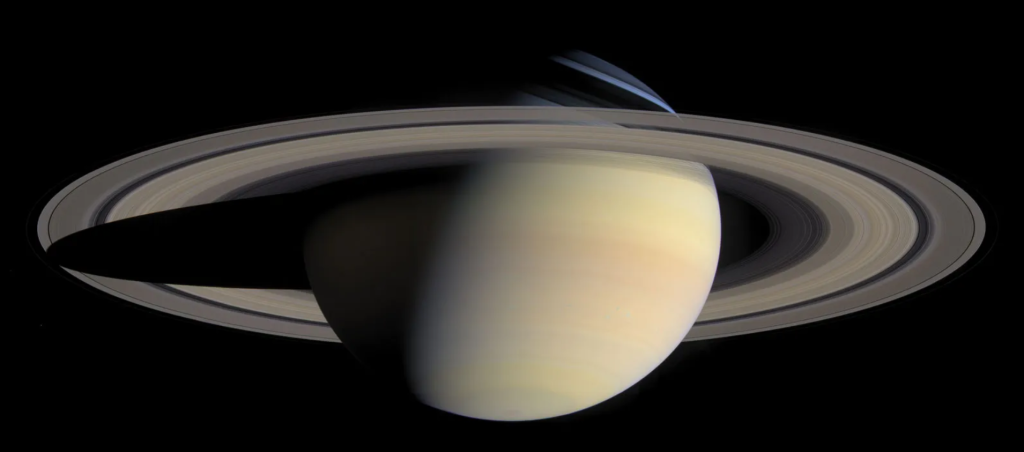
Saturn’s Rings
One of the solar system’s most distinctive planetary features is Saturn’s rings. Despite their remarkable thinness—only 100 meters (330 feet) thick—they have a diameter of 270,000 km (170,000 miles). The rings, which are composed of numerous rock and dust particles, are located within the Roche limit, which is the radius where the powerful tides that Saturn would force upon a large moon would tear it apart. The particles in the rings are also kept from clumping together to form a bigger body by these tidal forces.

South Polar Geysers, Enceladus
Enceladus, Saturn’s brightest moon, has an ice-covered smooth, nearly featureless surface. On the other hand, one of Saturn’s rings is formed by the tiger stripe region at the south pole, which consists of multiple ridges from which enormous geysers shoot water thousands of kilometers into space. Underneath the ice, there is probably an ocean of liquid water where the geysers originate. Life may exist anywhere there is energy and water.
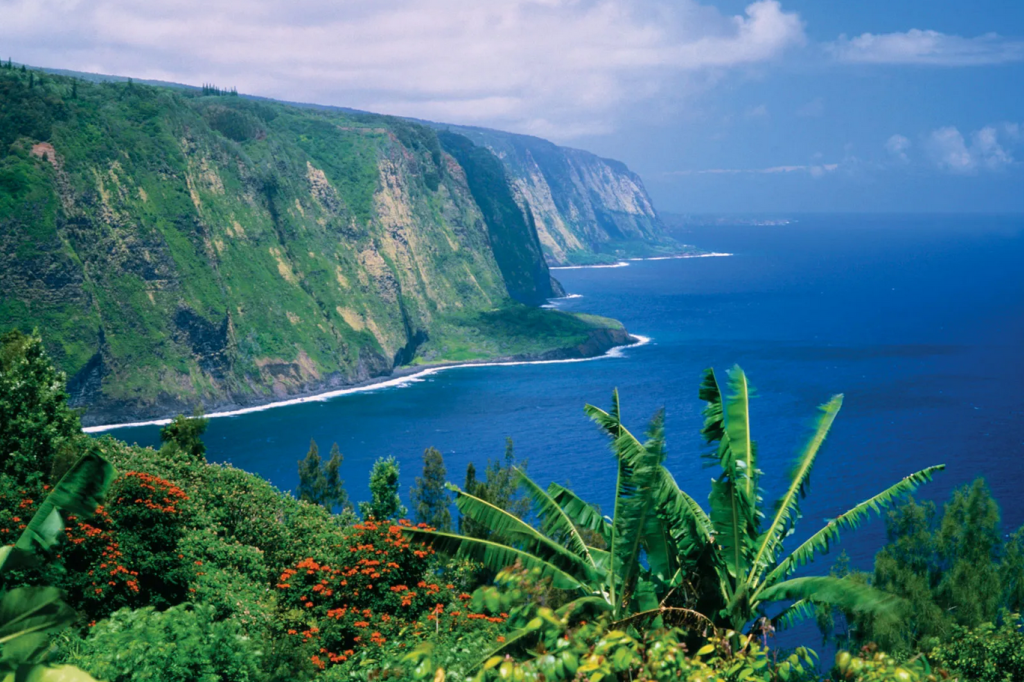
Hawaii
After exploring the solar system and seeing sights like the enormous storm of the Great Red Spot, the icy geysers of Enceladus, the vast chasms of Valles Marineris, and plenty of surface liquid water, you might want to finish your trip somewhere with a breathable atmosphere. Fortunately, there are many such stunning locations on Earth, like the volcanic island chain of Hawaii located in the Pacific, the planet’s largest ocean. Although the number and size of the volcanoes there are not as great as those on Io or Olympus Mons, they are ideally situated close to paved roads, classy hotels, excellent dining options, and amazing beaches. Enjoy your travels!
Share This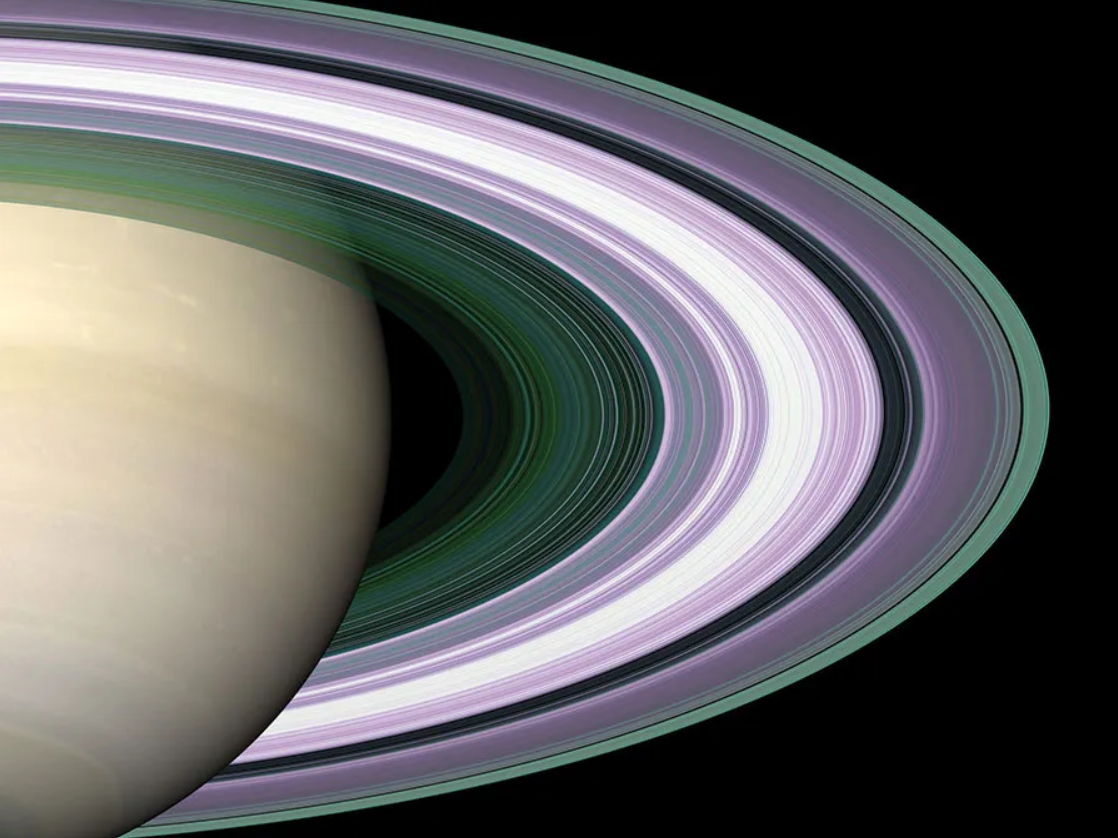





Be the first to comment